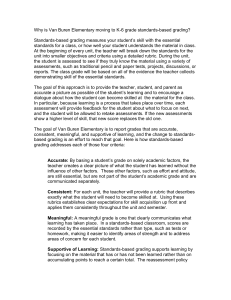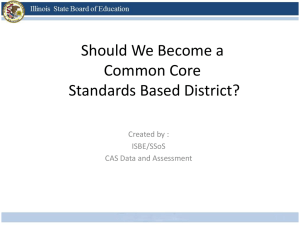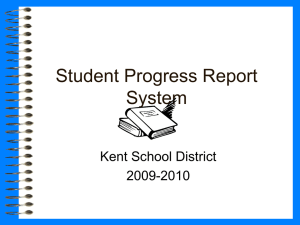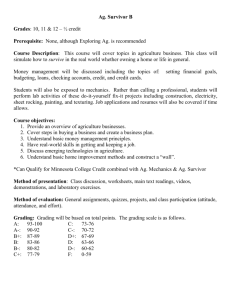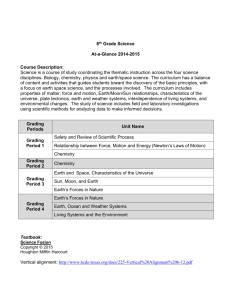TO ENROLL YOU MUST HAVE:
advertisement
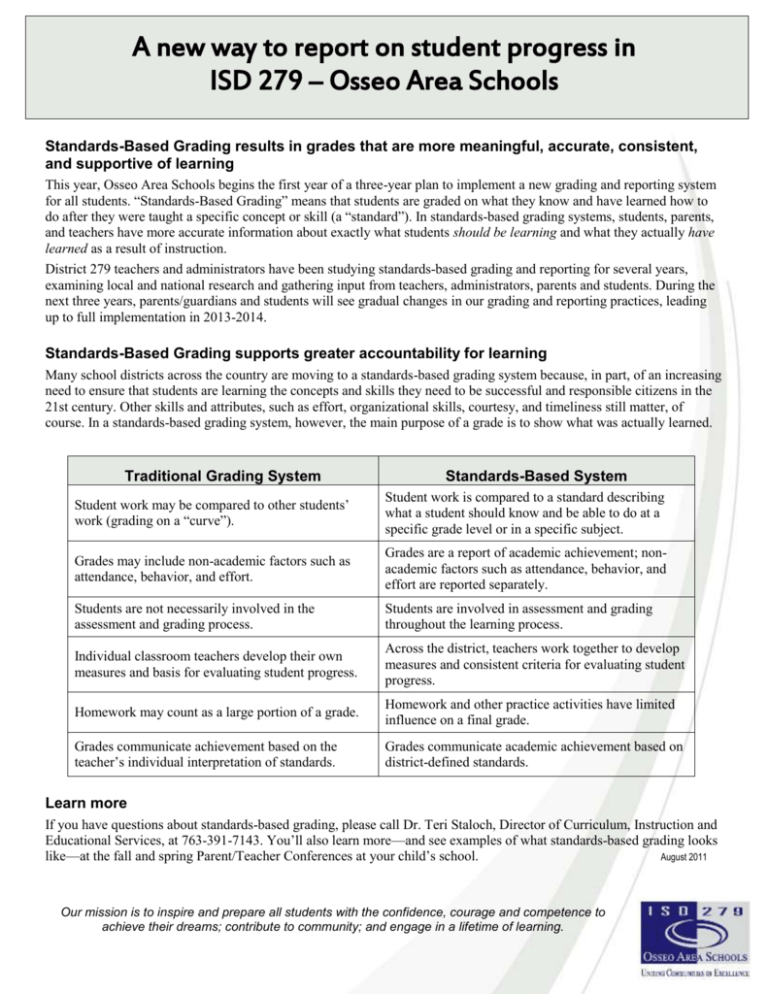
A new way to report on student progress in ISD 279 – Osseo Area Schools Standards-Based Grading results in grades that are more meaningful, accurate, consistent, and supportive of learning This year, Osseo Area Schools begins the first year of a three-year plan to implement a new grading and reporting system for all students. “Standards-Based Grading” means that students are graded on what they know and have learned how to do after they were taught a specific concept or skill (a “standard”). In standards-based grading systems, students, parents, and teachers have more accurate information about exactly what students should be learning and what they actually have learned as a result of instruction. District 279 teachers and administrators have been studying standards-based grading and reporting for several years, examining local and national research and gathering input from teachers, administrators, parents and students. During the next three years, parents/guardians and students will see gradual changes in our grading and reporting practices, leading up to full implementation in 2013-2014. Standards-Based Grading supports greater accountability for learning Many school districts across the country are moving to a standards-based grading system because, in part, of an increasing need to ensure that students are learning the concepts and skills they need to be successful and responsible citizens in the 21st century. Other skills and attributes, such as effort, organizational skills, courtesy, and timeliness still matter, of course. In a standards-based grading system, however, the main purpose of a grade is to show what was actually learned. Traditional Grading System Standards-Based System Student work may be compared to other students’ work (grading on a “curve”). Student work is compared to a standard describing what a student should know and be able to do at a specific grade level or in a specific subject. Grades may include non-academic factors such as attendance, behavior, and effort. Grades are a report of academic achievement; nonacademic factors such as attendance, behavior, and effort are reported separately. Students are not necessarily involved in the assessment and grading process. Students are involved in assessment and grading throughout the learning process. Individual classroom teachers develop their own measures and basis for evaluating student progress. Across the district, teachers work together to develop measures and consistent criteria for evaluating student progress. Homework may count as a large portion of a grade. Homework and other practice activities have limited influence on a final grade. Grades communicate achievement based on the teacher’s individual interpretation of standards. Grades communicate academic achievement based on district-defined standards. Learn more If you have questions about standards-based grading, please call Dr. Teri Staloch, Director of Curriculum, Instruction and Educational Services, at 763-391-7143. You’ll also learn more—and see examples of what standards-based grading looks like—at the fall and spring Parent/Teacher Conferences at your child’s school. August 2011 Our mission is to inspire and prepare all students with the confidence, courage and competence to achieve their dreams; contribute to community; and engage in a lifetime of learning.
